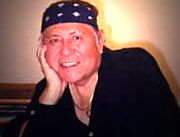Native American Artists
Indigenous American artists possess a profound ability to express their creations rooted in longstanding customs and cultural heritage. Their artistic creations offer a captivating glimpse into their vibrant civilizations and timeless traditions.
These artists pay homage to their cultural roots by incorporating traditional techniques and materials into their paintings while also embracing contemporary elements.
Native American art employs intricate symbolism and vivid imagery to narrate tales of creation, lineage, and the harmonious coexistence between humans and the natural world.
The diverse artistic styles of Native American painters reflect the unique essence of their respective tribes’ cultures.
Renowned for their exceptional styles and their talent in capturing the essence of their cultural legacy, Native American painters are highly esteemed.
Jaune Quick-to-See Smith and Fritz Scholder stand out among the gifted artists in the Native American painting community. Their mixed-media artworks have garnered acclaim for addressing significant societal and political subjects, serving as a source of inspiration.
Preserving the traditions, rituals, and customs of a particular culture necessitates their documentation and preservation. Moreover, cultural education should be actively promoted through schools and community programs, ensuring that these cherished traditions are handed down to younger generations.
By supporting local artisans, performers, and businesses, we contribute to the safeguarding of cultural traditions through documentation, education, and community empowerment.
Article Index:
Arthur Amiotte (Wanblí Ta Hócoka Washté or Good Eagle Center) is a native American artist (American painter, collage artist, educator, and author) who was born on the Pine Ridge Reservation in 1942 and raised between the Reservation and Custer, South Dakota. He is a member of the Oglala Lakota Oyate.
Bryan Akipa, a member of the Sisseton Wahpeton Dakota Nation, is a self-taught flute maker, flute player and traditional woodcarver.
 Famed Navajo artist R.C. Gorman is dead at the age of 74.
Famed Navajo artist R.C. Gorman is dead at the age of 74.

